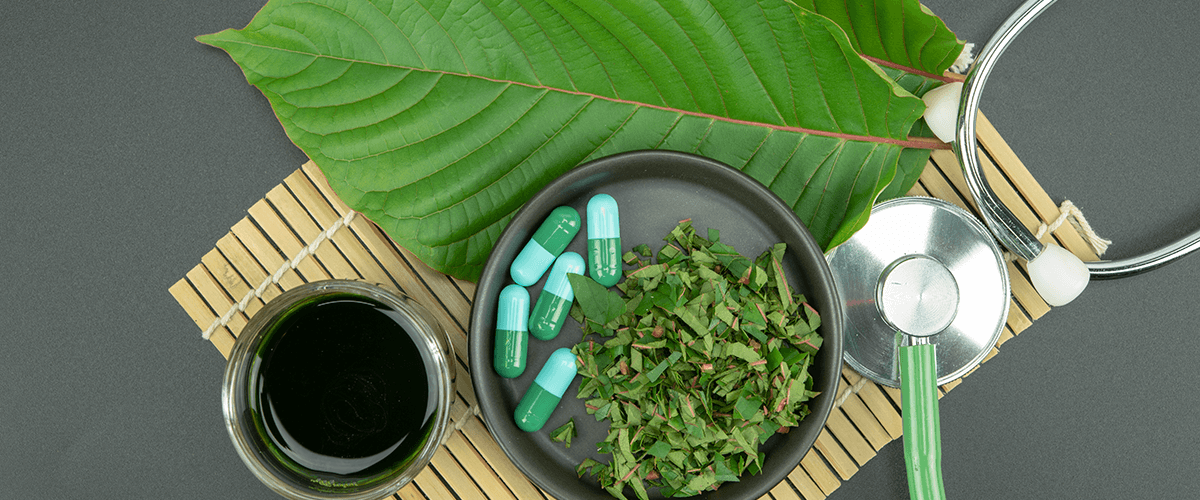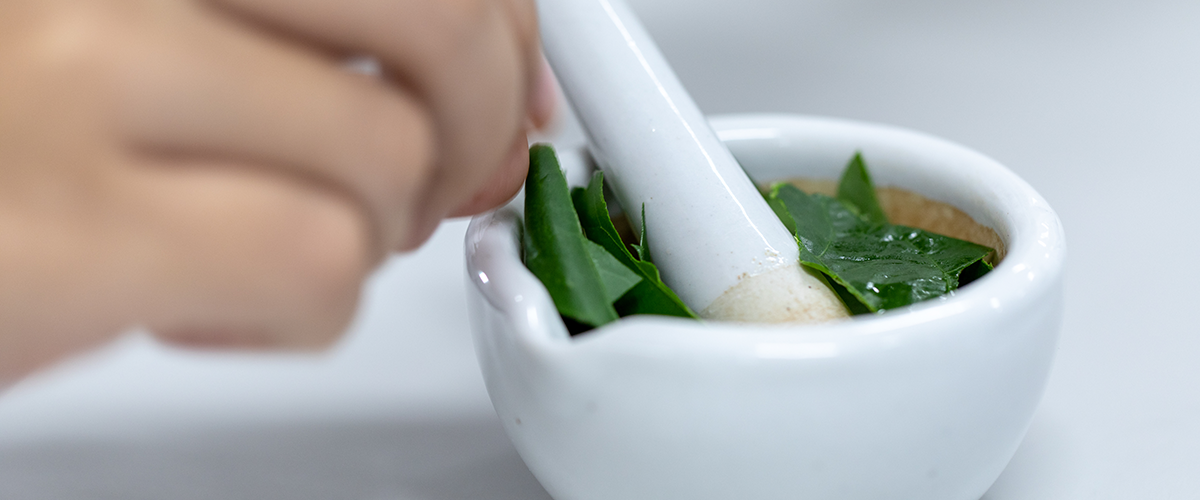
Pain isn't pretty, but it's pretty important. Consider for a moment that people born without pain sensitivity often don't survive childhood. The reason? Well, you're not going to get those burns, scrapes, and cuts tended to if you're not aware there's any tissue damage. Like it or not, pain is our body’s way of alerting us that something’s wrong.
To get a better sense of how pain works, let's explore the standard ways doctors differentiate pain symptoms. After reviewing different types of pain, we'll explore how the herb kratom could play a role in the future of pain management.

Pain is often split into two camps: acute and chronic. Acute pain symptoms are usually short-lived but extremely intense. Common examples for acute pain include stubbing your toe or accidentally touching a hot pan. The goal of this pain is to alert your brain to potential tissue damage and get you to stop whatever you're doing. On top of the pain, you might also notice symptoms like a faster heartbeat and shallow breathing with acute symptoms.
Chronic pain, on the other hand, can persist for years, but it's often not as intense as an acute symptom. Symptoms vary depending on the person's condition, but common chronic pain sensations include burning, stinging, and aching. Sometimes chronic pain could wax and wane to various conditions such as the weather, a person's emotional well being, and dietary triggers. Common chronic pain conditions include fibromyalgia, migraines, pelvic pain dysfunction, and lower back pain.
In addition to the acute v. chronic distinction, some people like to distinguish between emotional and physical pain. New research into this issue, however, shows there may not be as clear a distinction between mental and physical well-being.
For instance, one study found that a dose of acetaminophen (aka Tylenol) helped people suffering from emotional upset far more than the placebo group. This shows there's a direct link between our physical and mental states.
Thanks in large part to the work of NYU's Dr. John Sarno, many doctors are now using interesting "mind-body" techniques to help people overcome chronic pain disorders that don't involve direct tissue damage. These therapies include journaling, mindfulness meditation, and psychotherapy. For more information on the growing field of mind-body medicine, be sure to look into Sarno's work.
Unfortunately, the herb kratom has a lot of negative associations attached to it. You may recall the US Food & Drug Administration tried to list kratom as a Schedule I substance back in 2016. Although the FDA ban didn't go into effect, many US states and EU nations ban the use of kratom both recreationally and medically.
Despite all of this bad press, dedicated groups of chronic pain sufferers claim kratom played a significant role in their treatment protocol. So, what exactly is kratom and could it really help with chronic pain?
Let's start with the basics. Officially called Mitragyna speciosa, kratom is a green subtropical plant that's related to the coffee bean. People in Southeast Asia have cultivated and used various strains of kratom throughout the centuries for different purposes. In addition to chronic pain, traditional Asian healers have used kratom for many mood disorders such as anxiety, depression, and chronic fatigu

Although there's not a ton of research on kratom's physiological effects, most scientists believe this plant owes its analgesic properties to dozens of naturally occurring alkaloids. Of these compounds, mitragynine, and 7-HMG appear to be the most pronounced.
Apparently, these alkaloids are able to help temporarily block pain signals in the brain. Unlike stronger opiates, however, kratom doesn't appear to bind with opioid receptors directly. This leads some analysts to believe kratom could be used to help opiate abusers taper off of harder drugs like heroin.
Besides its potential uses in rehab, kratom might be useful as an alternative to pharmaceutical opioids. Indeed, a few countries like Denmark and Finland now allow doctors to prescribe kratom for various conditions. Since this herb is all-natural, many proponents claim it doesn't carry the potential side effects associated with pharmaceutical opioids.

Like cannabis, the strain of kratom you use will have a major impact on the effects you notice. Anyone interested in trying kratom for chronic pain needs to understand the basic differences between kratom strains.
When looking for a kratom product, keep these three classifications in mind: white, green, and red-vein. Of these three, red-vein is the most associated with chronic pain relief. It's believed red-vein kratom has higher concentrations of alkaloids that may help reduce pain. However, keep in mind red-vein kratom tends to be the most sedating.
By contrast, white-vein kratom tends to produce energizing effects, which is good for patients with chronic fatigue or depression. Lastly, green-vein kratom is the "Goldilocks" strain perfect for those who can't handle the intensity of white or red-vein products.
Now that you know the basic differences between white, green, and red-vein kratom, let's take a closer look at specific strains for chronic pain.
Named in honor of its Indonesian heritage, Red Bali Kratom is praised in the chronic pain community for its high concentrations of alkaloids. Indeed, preliminary research suggests Red Bali may have more 7-HMG than most other kratom varieties, which translates to a potent analgesic effect.
At low doses, you might experience a light buzz with Red Bali, but remember its red-vein heritage will cause extreme sedation at higher levels. Chronic pain patients who are new to kratom are usually advised to begin with Red Bali as it's relatively mild and doesn't tend to provoke side effects.
If Red Bali isn't giving you results, then you might want to move up to Maeng Da. Like Red Bali, Maeng Da is a red-vein strain that is very high in alkaloids. Most kratom experts believe Maeng Da is slightly more potent than Red Bali, which means you should get as strong an effect at lower doses.
Even though Maeng Da is a red, many users claim it has noticeable energizing and mood-boosting qualities at lower levels. So, for those looking for a subtle "pick me up" in addition to potent pain-relieving properties, experiment with microdosing Maeng Da.
Another popular red kratom for chronic pain is known as Red-Vein Thai. This popular strain is particularly well known for its soothing effects even at moderate levels. It's best to use Red-Vein Thai later in the day because the sedating effect can be quite strong.
You definitely don't want to pick up Red-Vein Thai if you're struggling with issues like narcolepsy or chronic fatigue. Instead, Red-Vein Thai is recommended for people with chronic pain who also suffer from issues like anxiety, PTSD, or insomnia.
For those who aren't having luck with red-vein strains, why not give White-Vein Indo a try? As with other strains in the white-vein family, this Indo tends to have a euphoric effect on users and only leads to sedation at very high doses. Of all the kratom strains in this family, White-Vein Indo appears to have the highest concentration of pain-relieving alkaloids.
Obviously, people who suffer from fatigue on top of their chronic pain will likely get the most benefit out of this strain. A few conditions that might be alleviated with low doses of White-Vein Indo include fibromyalgia, chronic fatigue syndrome, and depression

Since kratom is such a hotly contested substance, there's no precise science on dosing the herb. We do know, however, that kratom tends to produce stimulating effects in low doses and sedating effects in higher doses. So, dosing kratom really depends on what you're trying to treat and what strain you're using.
Newcomers should start with less than 2 g of kratom and see how it affects their body. If you don't notice adverse side effects, you could move up by about 1 g until you reach 4 g. In general, it's never recommended you go over 10 g of kratom in one day.
There's currently no evidence that kratom could cause an overdose. People who take this herb at high doses usually fall into a deep sleep within a few minutes of ingestion. You can, however, develop a tolerance to kratom if you take the herb every day. To avoid this, try to space out your kratom doses throughout the week.